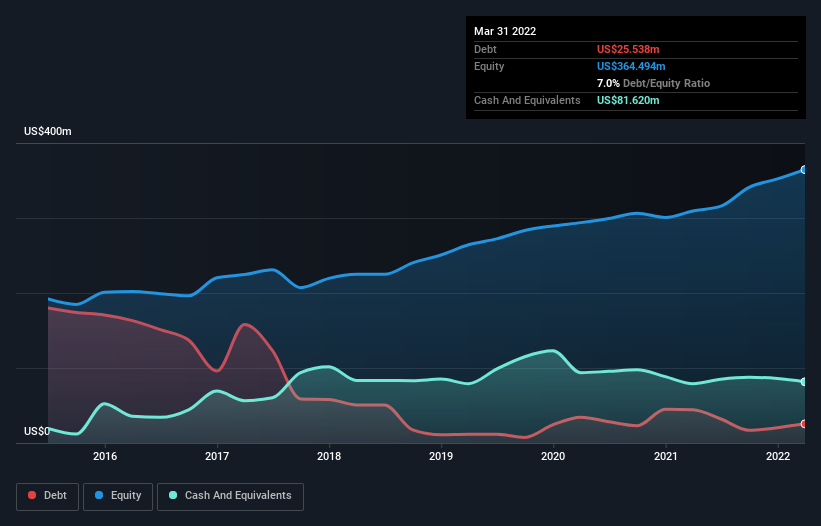Is NACCO Industries (NYSE:NC) Using Debt Sensibly?
Warren Buffett famously said, 'Volatility is far from synonymous with risk.' It's only natural to consider a company's balance sheet when you examine how risky it is, since debt is often involved when a business collapses. We can see that NACCO Industries, Inc. (NYSE:NC) does use debt in its business. But the real question is whether this debt is making the company risky.
Why Does Debt Bring Risk?
Generally speaking, debt only becomes a real problem when a company can't easily pay it off, either by raising capital or with its own cash flow. If things get really bad, the lenders can take control of the business. While that is not too common, we often do see indebted companies permanently diluting shareholders because lenders force them to raise capital at a distressed price. By replacing dilution, though, debt can be an extremely good tool for businesses that need capital to invest in growth at high rates of return. The first thing to do when considering how much debt a business uses is to look at its cash and debt together.
View our latest analysis for NACCO Industries
What Is NACCO Industries's Debt?
You can click the graphic below for the historical numbers, but it shows that NACCO Industries had US$25.5m of debt in March 2022, down from US$44.4m, one year before. However, its balance sheet shows it holds US$81.6m in cash, so it actually has US$56.1m net cash.
How Healthy Is NACCO Industries' Balance Sheet?
We can see from the most recent balance sheet that NACCO Industries had liabilities of US$36.4m falling due within a year, and liabilities of US$112.1m due beyond that. On the other hand, it had cash of US$81.6m and US$45.6m worth of receivables due within a year. So its liabilities total US$21.3m more than the combination of its cash and short-term receivables.
Given NACCO Industries has a market capitalization of US$365.8m, it's hard to believe these liabilities pose much threat. However, we do think it is worth keeping an eye on its balance sheet strength, as it may change over time. Despite its noteworthy liabilities, NACCO Industries boasts net cash, so it's fair to say it does not have a heavy debt load! There's no doubt that we learn most about debt from the balance sheet. But it is NACCO Industries's earnings that will influence how the balance sheet holds up in the future. So when considering debt, it's definitely worth looking at the earnings trend. Click here for an interactive snapshot.
Over 12 months, NACCO Industries reported revenue of US$202m, which is a gain of 48%, although it did not report any earnings before interest and tax. With any luck the company will be able to grow its way to profitability.
So How Risky Is NACCO Industries?
While NACCO Industries lost money on an earnings before interest and tax (EBIT) level, it actually booked a paper profit of US$52m. So taking that on face value, and considering the cash, we don't think its very risky in the near term. The good news for NACCO Industries shareholders is that its revenue growth is strong, making it easier to raise capital if need be. But that doesn't change our opinion that the stock is risky. The balance sheet is clearly the area to focus on when you are analysing debt. However, not all investment risk resides within the balance sheet - far from it. For example - NACCO Industries has 4 warning signs we think you should be aware of.
At the end of the day, it's often better to focus on companies that are free from net debt. You can access our special list of such companies (all with a track record of profit growth). It's free.
Have feedback on this article? Concerned about the content? Get in touch with us directly. Alternatively, email editorial-team (at) simplywallst.com.
This article by Simply Wall St is general in nature. We provide commentary based on historical data and analyst forecasts only using an unbiased methodology and our articles are not intended to be financial advice. It does not constitute a recommendation to buy or sell any stock, and does not take account of your objectives, or your financial situation. We aim to bring you long-term focused analysis driven by fundamental data. Note that our analysis may not factor in the latest price-sensitive company announcements or qualitative material. Simply Wall St has no position in any stocks mentioned.

 Yahoo Finance
Yahoo Finance 
